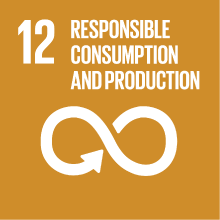MACROECONOMICS-1
- Academic year
- 2020/2021 Syllabus of previous years
- Official course title
- POLITICA ECONOMICA - 1
- Course code
- ET0052 (AF:316748 AR:170347)
- Modality
- On campus classes
- ECTS credits
- 6 out of 12 of MACROECONOMICS
- Subdivision
- Surnames A-La
- Degree level
- Bachelor's Degree Programme
- Academic Discipline
- SECS-P/02
- Period
- 1st Term
- Course year
- 2
- Where
- TREVISO
- Moodle
- Go to Moodle page
Contribution of the course to the overall degree programme goals
The models analysed in the course will help understanding the effect of economic policies, such as fiscal policy and monetary policy, on three main macroeconomic variables: aggregate output, unemployment rate and inflation rate. The course will also introduce basic models of economic growth, which explain the evolution of aggregate production in the long run.
WARNING! For the 2020/2021 A.Y. the course will be given in BLENDED mode.
Expected learning outcomes
1.1. Understand the interconnections between goods and financial markets
1.2. Understand the determinants of short and medium run equilibrium in goods and financial markets in closed and open economies
1.3. Understand the impact of international openness on goods and financial markets
1.4. Understand the effect of fiscal and monetary policies in the short and in the medium run
2. Ability to apply knowledge:
2.1. Identify effects of economic policies on goods and financial markets
2.2. Apply macroeconomic models to understand which economic policy tools may be used to achieve specific goals set by governments or central banks in terms of output, unemployment rate and inflation
2.3. Evaluate the differential impact of alternative economic policy instruments on the equilibrium in good and financial markets
3. Making judgements:
3.1. Evaluate the condition of a particular macroeconomic system and formulate hypothesis on its future evolution, based on analytical models
3.2. Based on the models studied in the course, evaluate the efficacy of alternative economic policies on various macroeconomic objectives in the short, medium and long run
3.3. Understand the current economic debate and critically assess the empirical relevance of the models studied
Pre-requirements
Prerequisites: Main learning outcomes of the Math course (first and second module) must be achieved (even if the exam has not been taken yet). In particular, students should be familiar with basic tools of analytic geometry and systems of equations.
Contents
- National accounting; definition of inflation rate
- The goods market
- Financial markets
- Goods and financial Markets: the IS-LM model
- Financial markets II: the extended IS-LM model
- The labour market
- The Phillips curve, the natural rate of unemployment and Inflation
- From the short to the medium run: the IS-LM-PC model
Referral texts
Additional material on specific topics will be made available on Moodle.
Assessment methods
The exam assesses students’ knowledge and understanding of the topics included in the program as well as students’ ability to apply the theoretical framework acquired in the course to evaluate the effect of monetary and fiscal policies on macroeconomic equilibrium.
Type of exam
Teaching methods
The course will be delivered in 12 weeks, with three lectures in each of them. The first week will be delivered under frontal teaching, followed by 4 weeks in e-learning. The whole second module (politica economica 2) will be again delivered in the standard way.
Students' reception will be provided on-line during the e-learning phase, under both traditional and on-line modes outside of it.
Four rapid tests will be realized, as quiz in Moodle, approximately every 14 days. Those students who participated at least to three tests will get a valuation in a scale of 30 points (10 points per test, discarded the lowest grade if all four tests have been undertaken). The tests will take place during the second period as well. The final exam will be conventional and written.
One possibility, for the students who passed the tests, will be that of improving the final grade, If the test valuation will be higher than the one in the written exam, the final score will be an avarage of the two valuations.
Additional exercises can be found in this book: D. W. Findlay, Esercizi di Macroeconomia. Guida allo studio del testo di O. Blanchard, A. Amighini, F. Giavazzi, Il Mulino, Bologna, 2017.
Further information
2030 Agenda for Sustainable Development Goals
This subject deals with topics related to the macro-area "Circular economy, innovation, work" and contributes to the achievement of one or more goals of U. N. Agenda for Sustainable Development


